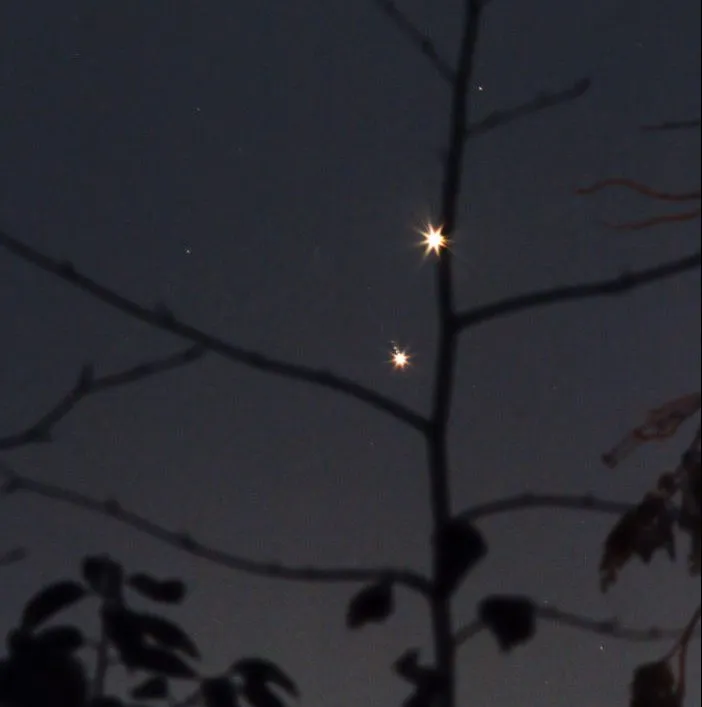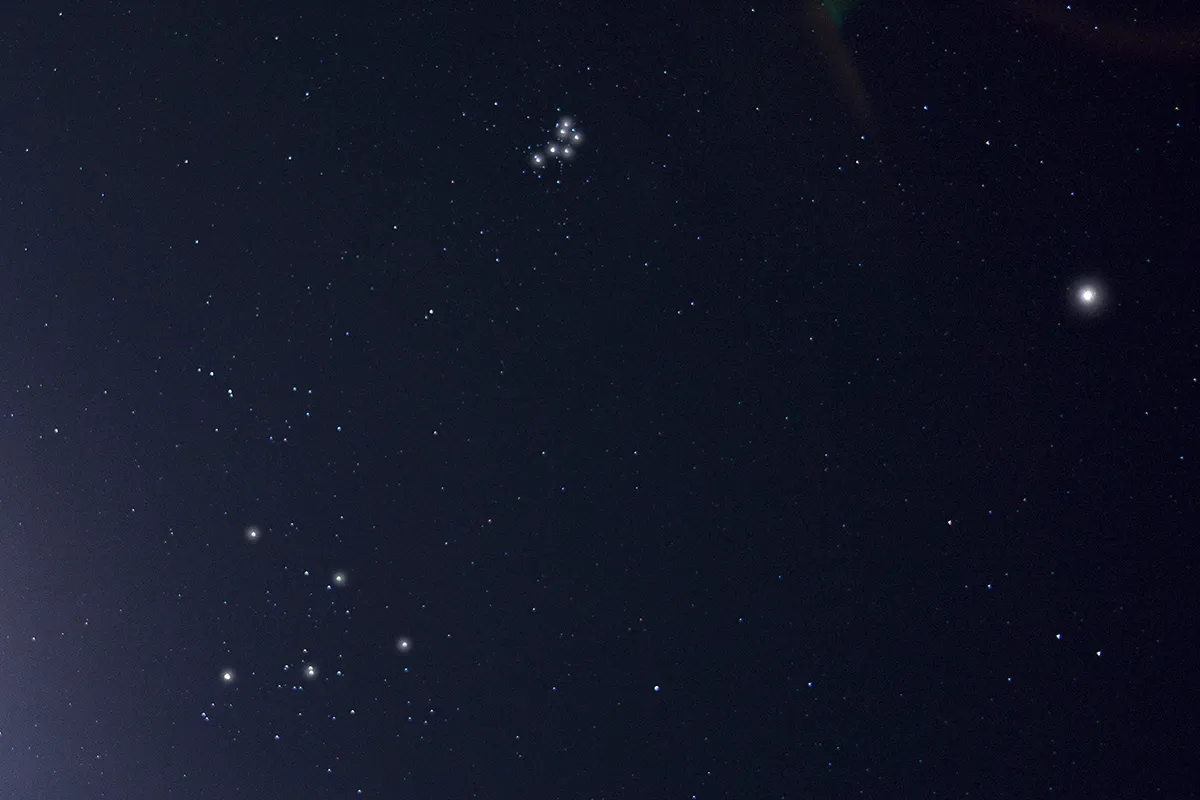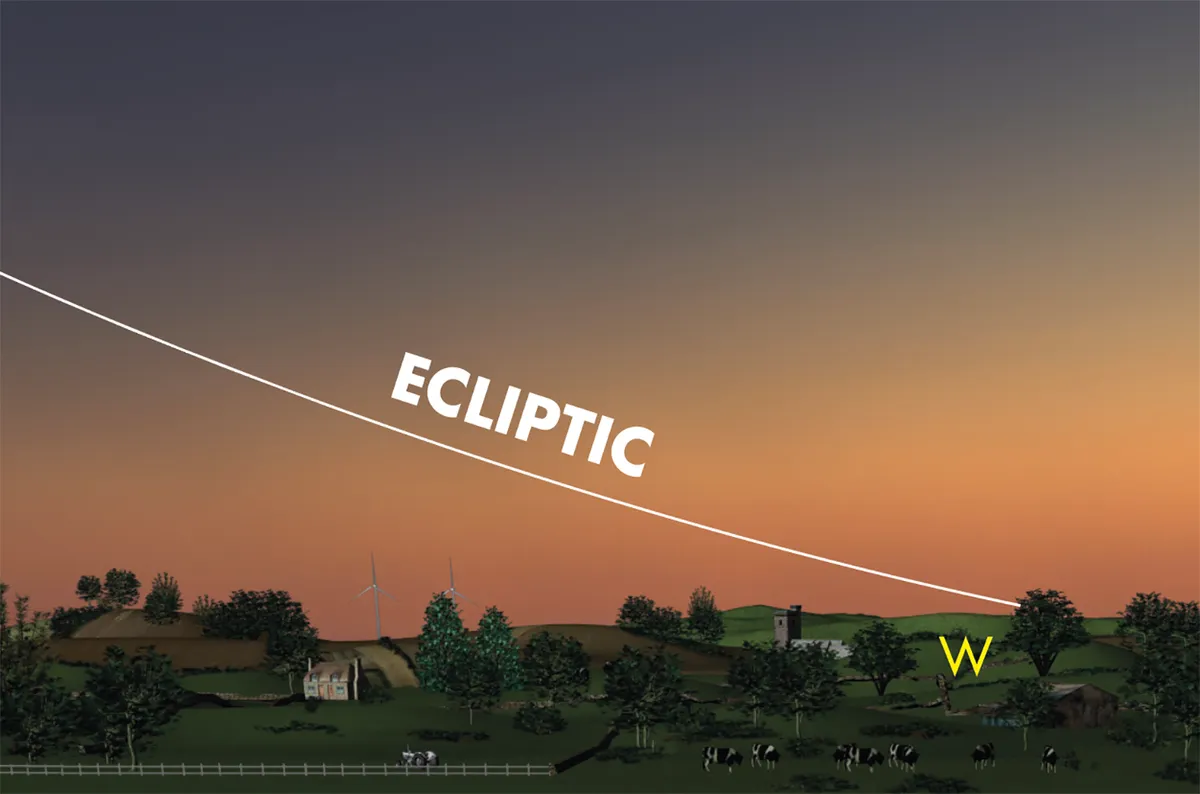You may have heard word there's another planet alignment – or planet parade – in August 2025, evoking memories of the wonderful alignment of the planets we saw in January and February 2025.
In August 2025, six planets and the Moon will be visible in the sky – Mercury, Venus, Jupiter, Saturn, Uranus and Neptune.
Some are even calling this the planet alignment 'August edition', in reference to just how spectacular the planets were in the first two months of 2025.
Best time to see the August planet alignment
The planet alignment of August 2025 is best seen on the mornings of 18/19 August, before sunrise.
That could be between 4am and 6am, depending on your exact location.
These dates are the best time because the planets will be on view in the same patch of sky as the Moon, making for a spectacular sight.
But the catch with this August planet alignment is that six planets will indeed be above the horizon in the Northern Hemisphere at once, but just before sunrise.
That means if you want to see them, an early start will be needed, and you'll need to be looking before the Sun rises above the horizon.
Also, our good friend Mars rises and sets with the Sun in August, so it doesn't join the planet parade this time.
For more stargazing advice, sign up to receive our e-newsletter and subscribe to our YouTube channel.

Let's take a look at what's happening with the six planets throughout August 2025, and what we'll really see.
First, a word of caution. If you're attempting to observe some of the dimmer, trickier morning planets in August 2025, you may be tempted to reach for binoculars or a telescope.
If you do, remember that observing the Sun directly with the naked eye, binoculars or an unfiltered telescope can seriously damage your eyesight.
That means extreme care should be taken when observing the morning sky this close to sunrise, and you should stop observing well before the Sun is visible above the horizon.
Early August

The further south you are in the Northern Hemisphere, the easier you'll be able to see the planets rise above the horizon before dawn.
And throughout your morning planet-observing adventures in August 2025, a clear horizon will be key.
The planets will poke above the horizon just before sunrise, meaning you'll have a much better chance of seeing them if you can get away from light pollution.
Find somewhere the sky is naturally dark, the horizon flat and clear of trees and tall buildings.

In early August, the two planets you're most likely to spot before sunrise are Jupiter and Venus.
They will be visible above the eastern horizon before sunrise, which will likely be between 04:00 or 05:00 local time, depending on your exact location.
If you're observing from some of the more southerly states in the USA, for example, you'll get a better view, because they'll climb higher while the sky is still dark.

But if you're observing from the UK, you may need to look earlier to catch the planet alignment before the Sun rises.
A good stargazing app will give you exact timings and locations for the planets where you are.
Keep watching Jupiter and Venus each morning and you'll notice Jupiter begin to catch up with Venus, the two planets getting closer and closer together in the sky.
Venus and Jupiter will be closest together on the morning of 12 August, appearing like a beautiful double star in the east before sunrise.

At the beginning of August, Uranus is also above the horizon in the morning sky, but will be tricky to see unless you catch it in the very early hours before dawn.
You can find it in the east, high up and somewhere between the Hyades star cluster and the Pleiades star cluster.
Saturn and Neptune are very close together in the south – Neptune above Saturn – and both are to the left of the Circlet star pattern in the constellation Pisces.
Neptune is very faint and will require a telescope if you're going to see it this month.
Mercury is not visible yet, having reached inferior conjunction on 1 August 2025.
That's an astronomical way of describing when Mercury is between Earth and the Sun, and so is lost in the Sun's glare, from our perspective.
In fact, Mercury only really becomes visible in the morning sky from around 18/19 August, when it emerges from the Sun's glare and can be seen just before sunrise.
Mid August

Around 10 August, you'll likely have noticed that Jupiter and Venus appear closer together than they did at the beginning of August.
And you'll hopefully have noticed they're visible a little bit longer before sunrise.
By now, autumn is on the way, and the mornings are starting to get a darker than they were at the height of summer, which is good news for morning stargazers.

By 11 August, Jupiter and Venus are even closer together in the morning sky in the east, and by 12 August they'll be at their closest.
A close meeting of two objects in the sky like this is known as a 'conjunction', and quite a beautiful thing to behold.
By 13/14 August, Jupiter will have 'overtaken' Venus in the sky, and is now east of the planet.

By mid August, the rest of the planets in this August 2025 planet alignment will have improved, and will continue to improve as the month goes on and the mornings get even darker.
Saturn reaches a high altitude under darkness from mid August onwards, and Neptune is still there, visible above the ringed planet.
By mid August, both Saturn and Neptune are high in the south before sunrise.
Conditions are also improving for Uranus, with the skies getting darker and darker each morning.

Uranus is drifting ever slightly eastwards each morning, taking it below the Pleiades star cluster with each passing day. You can see this in our star chart further down the page.
Indeed, the Pleiades is a good marker for finding Uranus in the morning sky in August, and both are visible in the east-southeast before sunrise.
Binoculars will be good for observing Saturn close to Neptune, and for exploring Uranus beneath the Pleiades.
But as we stated above, extreme caution should be exercised if you're using binoculars or a telescope to look at the sky this close to sunrise.
Late August planet alignment

Mercury enters the picture around 18/19 August, having passed by the Sun – from our perspective on Earth – and finally emerging into the morning sky.
By this time, the Moon too is now firmly a morning object, tracking eastwards each day and building up to the main event.
On the morning of 18 August 2025, you'll get a chance to see something quite spectacular, and that's a planet alignment, or parade: a line of Solar System worlds stretching above the horizon.
Going from the horizon upwards, Mercury, Venus, Jupiter and the Moon are all positioned in an almost straight line.
You can see them before sunrise in the eastern sky, and again, using a stargazing app will help you work out exactly where and when to look to see it.

At the same time that Mercury, Venus, Jupiter and the Moon are all in line, Uranus extends that line even higher up in the sky, visible between the Pleiades and the Hyades star clusters.
And, over in the southwest, Saturn and Neptune are sitting close together.
That makes 18 August quite a special morning, as those five Solar System worlds (including the Moon) are in a line in the east, with Saturn and Neptune close together in the south, making a total of seven Solar System bodies all above the horizon.
This could be tricky to see, given the oncoming sunrise and the fact that Mercury won't rise very high before the Sun.
If you want the best chance of seeing the August 2025 planet alignment, get observing early, get away from light pollution and make sure you have a clear horizon.
By the morning of 19 August, those planets will still be in the same position in the sky, but the Moon has now tracked slightly eastwards, making the line-up rather askew!

On the morning of 20 August, the Moon now forms a neat triangle with Jupiter and Venus.
And there's another nice line-up to look out for on 21 August, the very thin crescent Moon just above Mercury in the morning sky.
Both Mercury and the crescent Moon will be tricky to see as dawn approaches, but they're there, if you can manage to spot them!
From this point onwards, things improve as the sky gets darker, the planetd get brighter and we're able to catch them much earlier before sunrise.

February planet alignment vs August planet alignment
Will the August planet alignment be as good as the February 2025 event?
The short answer is 'not quite', and for a few reasons!
- Mars is notably absent from the planet alignment in August
- This alignment is in the summer; the skies don't get as dark as they do in winter
- We'll be fighting the onset of dawn twilight
- An early rise is required, so it's less convenient for casual stargazers
But with some good planning and timing, you could be in for a real treat.
Why planet parades and alignments happen

Planet parades happen when several Solar System planets appear close together in the sky from our point of view on Earth.
This happens because all the planets – including Earth – orbit the Sun in roughly the same flat plane of our Solar System.
And since we're viewing the Solar System from inside it, all the planets travel along the same apparent path in our sky as the Sun, known as the ecliptic.

This is why the planets sometimes appear grouped together in the sky in twos, threes or more, sometimes even in a small part of the sky.
Some call this a 'planet parade' or 'planet alignment'.
Planets being close together in the sky is a common occurrence, but it's less common to see four or more together in a line at once.
And of course, the planets aren’t actually close together in space: they just appear close together in the sky from our perspective.
If you do manage to spot or photograph the August 2025 planet alignment, we'd love to hear your memories and see your images. Send them to us by emailing contactus@skyatnightmagazine.com

